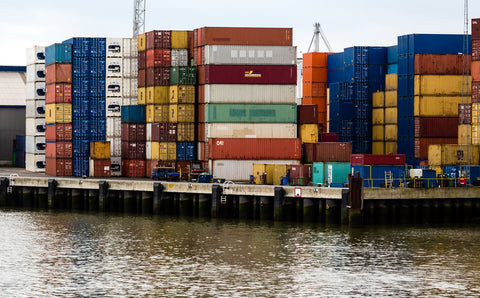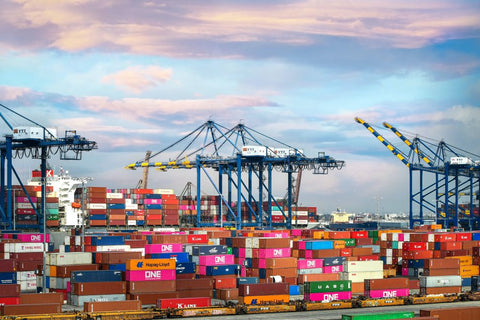Why Are Shipping Containers So Expensive All Of A Sudden? Here’s What You Need To Go.
Posted by Rodrigo Barrientos on
If you’ve had to ship anything during the last few months, you’ve most likely noticed the spike in prices. For many people, this has made restocking a nightmare. The cost of a single shipping container has risen dramatically in the last 18 months due to the coronavirus disrupting supply chains and trade routes. Route prices have increased sevenfold, if not more.
But why has the cost of shipping containers from China gotten so high?
The Reasons Behind The Spike In Shipping Container Cost

The main reason is, of course, the ongoing COVID 19 pandemic. In 2020, the epidemic impacted global supply networks, and shipping prices reflected this. With rates expected to remain at current levels until 2023, you should explore other avenues to restock to cut shipping expenses in the short run and keep your customers satisfied.
Another reason why shipping prices have surged is that there is a global shortage of shipping containers after the worldwide shutdown in COVID-19. China reopened its economy faster than the US and Europe. However, the shipping containers required by China to export produced goods were stranded in those two places. As a result, China faced a shipping container scarcity.
Triton International reported that the pandemic caused countless orders for new shipping containers to be canceled. Furthermore, Chinese manufacturers have only produced around three weeks' shipping containers. Container prices reflect this, with a massive increase from $1,800 per CEU to $3,500.
The merchant vessel Ever Given became stranded in the Suez Canal in March 2021, closing the canal for a week. This led shipping costs to skyrocket even further.
The Canal transports 12% of the world's trade, and the incident cost between $2.2 billion and $3.9 billion in lost international trade due to the delays.
Although the Canal is no longer obstructed, the delay caused by the closure caused shipping companies to be even more delayed in sending ships on their way to their destinations. Ports are already grappling with delays in berthing and dispatching cargo ships; further delays caused by situations like this put additional pressure on freight costs.
If that wasn’t enough, there was recently a spike in COVID cases in China, which slowed production even further due to lockdowns. This has also increased the wait time for vessels. Under normal circumstances, It would be half a day now; shipping takes 16 days.
How Does This Affect The Consumer?

The increase in shipping costs transportation impacts the price of products because it is an integral part of their production and distribution. Manufacturers must send both product parts, such as microchips and cotton, and product packaging. And once the goods have been packaged and bundled, they must be delivered to customers, whether through physical stores, online merchants, direct to businesses, or direct to consumers. Higher freight costs impact every area of the supply chain, including what companies must charge for goods to break even or profit. This could negatively affect customers as they may need to pay more for goods and services.
What Shipping Companies Can Do To Reduce Costs

Shipping Companies aren’t to blame for the rise in the cost of shipping containers, but there are some steps they can take to reduce the costs. Air freights deliver your goods faster, but it is also significantly more expensive than the ocean freight. However, because the cost of ocean shipping is at an all-time high, air freight may be a more cost-effective shipping choice for your company right now. Top clothing retailers such as Levi Strauss and Tommy Hilfiger use Airfreight to cut expenses.
China is the world's primary manufacturer, but it's currently facing constraints. The current situation serves as a reminder to shipping companies that they shouldn't place their eggs in one basket. Instead of relying on one China for all their manufacturing needs, they should have multiple sources to reduce risk.
Consider outsourcing your manufacturing to a country other than China, preferably one that is closer to your major markets. Vietnam is a potential manufacturing option to China, but you might even find suppliers in the US.
Shipknox is your source for all your shipping supplies. We’re a US-based company that strives to provide you with shrink wrap and other shipping necessities at a reasonable price.
